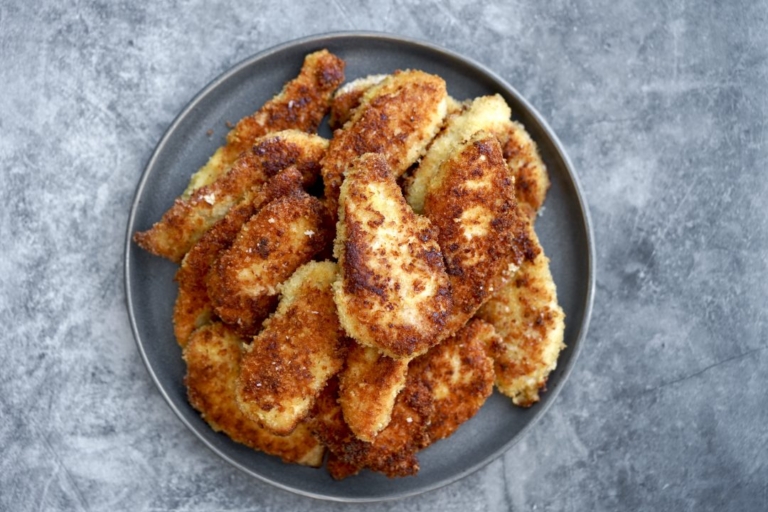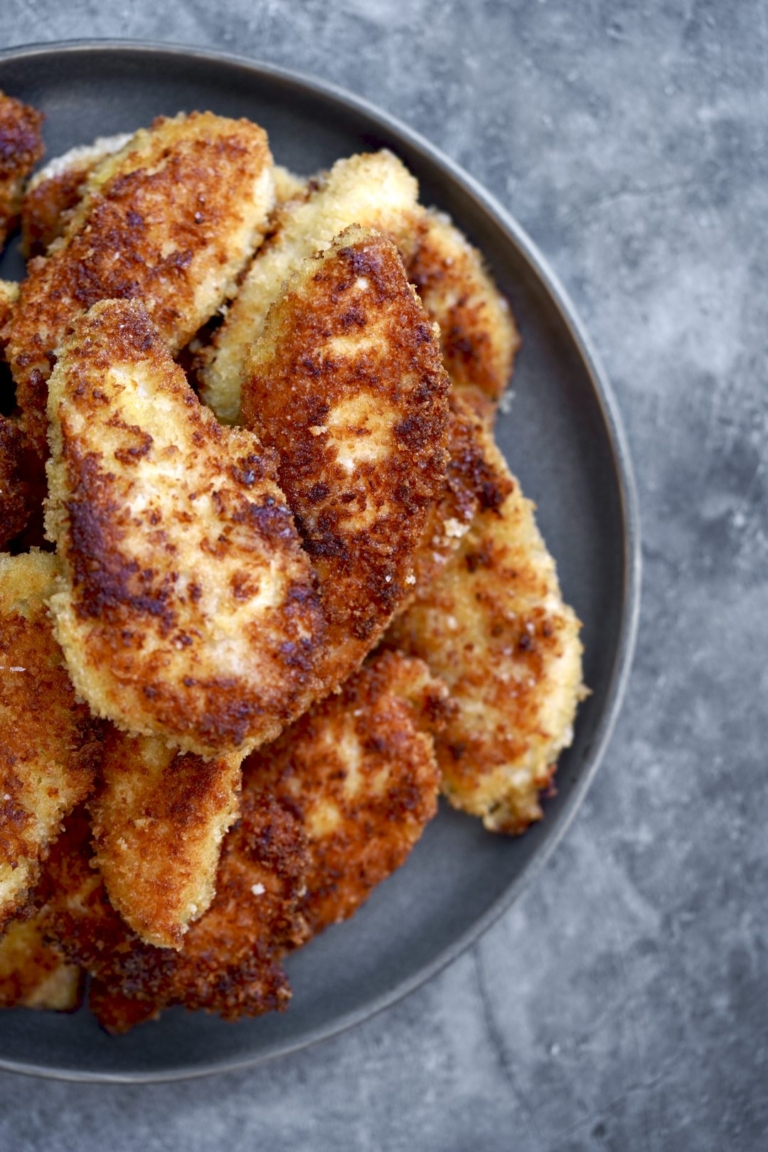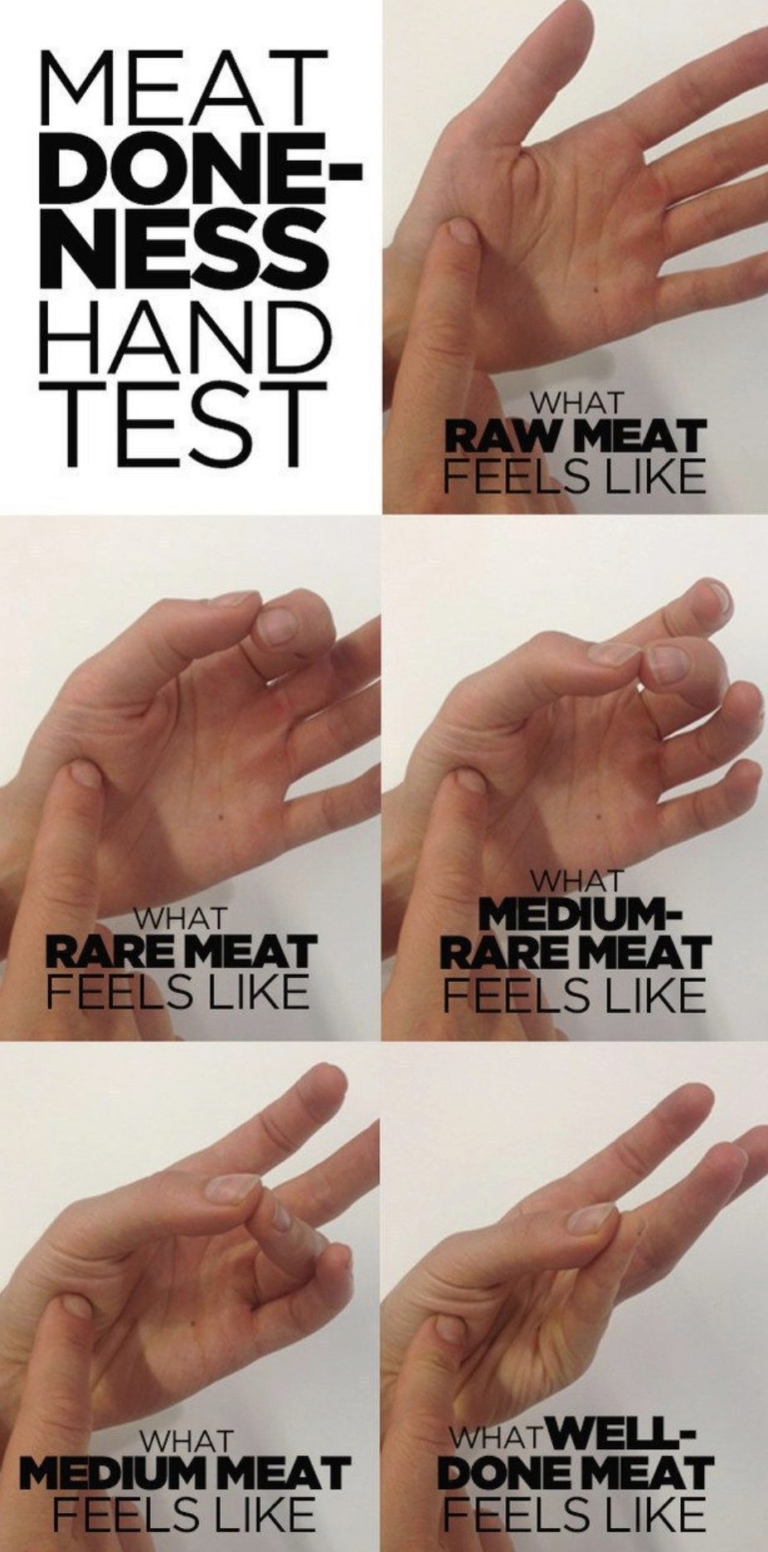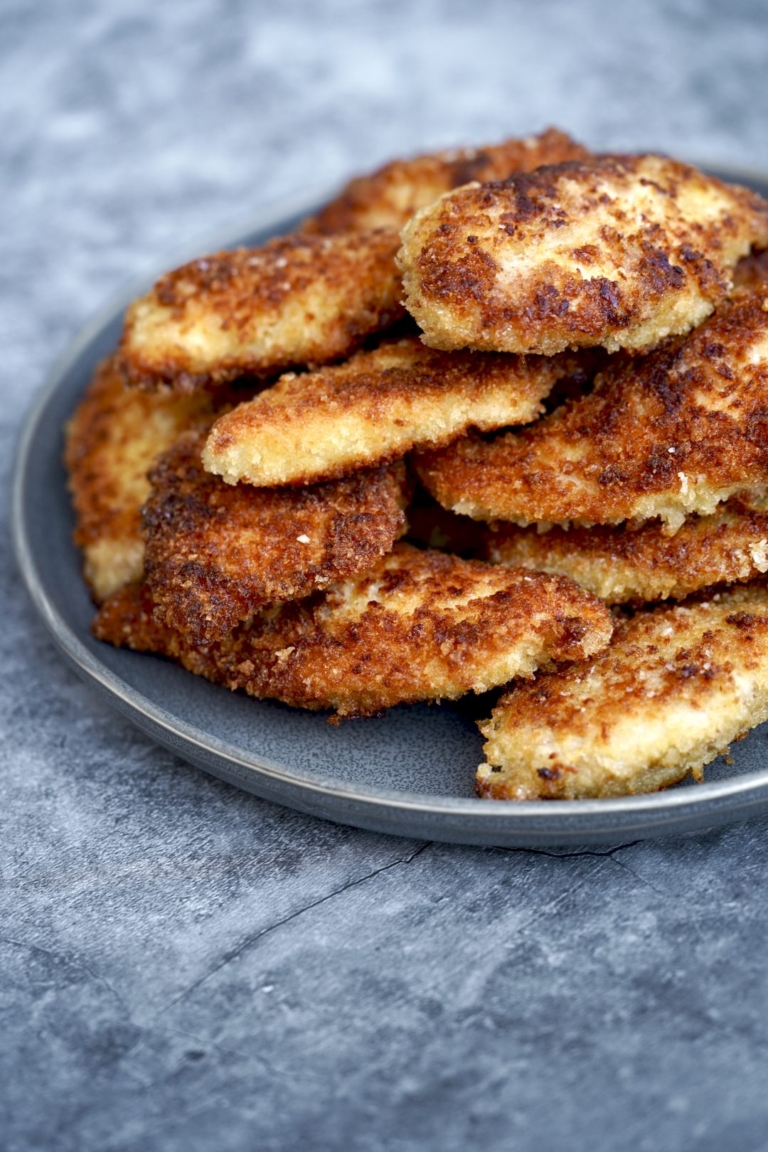Eli’s Crispy Chicken (And How Not To Overcook It!)

According to my oldest son, he does not like chicken. Untrue really; he’s just particular when it comes to chicken. This, I can relate to. Most chicken is over-cooked. Nothing overcooked tastes good. But chicken, in particular, is the worst because it becomes dry and flavorless. Chicken must be moist, slightly soft, and juicy–never, ever dry. The average home cook lives in fear of raw chicken in their kitchen. The thought of salmonella and getting others sick is unnerving. I get it. But in all honestly, that rarely happens, especially if you wash your hands and knife well. While cooking for people professionally, the thought did cross my mind a few times, but you get over that quickly.
Touch is your best measure of “doneness” when cooking chicken, or any other kind of meat for that matter. This is what they teach in culinary school. Chicken is a muscle. As it loses moisture during the cooking process, its fibers tighten up. By pushing down on the meat, you can see how much it springs back. The question most people have is “what is the appropriate amount of firmness?” You can find the best answer on your hand. See the photo below. If you touch your middle finger to your thumb while keeping your hand relaxed, use your other hand to touch the muscle that operates your thumb, right above the wrist. This represents the approximate amount of firmness you should expect from a piece of chicken when it is done.
The touch test is a very useful technique here. Another well-known test, looking for clear juices, is difficult with a boneless skinless cutlet. I don’t particularly like thermometers, as they can easily pierce through the meat–which can cause it to dry out even faster. The shrink test is also important when evaluating a chicken’s doneness. Chicken should shrink slightly, but not dramatically. If a piece of chicken is half the size it was when you started, it’s overcooked.
Fear aside, what makes my recipe for Eli’s crispy chicken so delicious is the crispy golden-brown panko breading, finished with fresh lemon juice. It is salty and crisp and always a crowd-pleaser. The technique for properly coating the chicken is one I did not fully understand until culinary school. The basic technique is French and it is called “panure a l’anglaise“. This technique consists of three important steps: step 1- dredging in flour, step 2- evenly coating in egg, and step 3- completely and evenly covering with breadcrumbs.
It seems so obvious, but why is it so important? The flour-egg-breadcrumb coasting seals in the moisture during the cooking process and creates the irresistible crunch of the cutlets. To avoid the mess, if you prefer, you can use large ziplock bags for the flour and breadcrumbs instead of large bowls. This classic technique is extremely versatile and can be used with fish, pork, or firmer vegetables like eggplant. You can also replace breadcrumbs with different coatings, depending on your recipe, such as chopped nuts, mixed herbs, coconut, etc.
Once I started making this chicken recipe, my oldest son, Eli, decided he liked chicken. The dish was thus named accordingly–Eli’s crispy chicken. It has become a staple in our house and many of our friends make this for their kids. If I go too long without making it, my kids will ask for it. Most of us eat it just as it is, others (who will remain nameless) dip it in spicy ketchup. But I simply turn my head to that.
Eli's Crispy Chicken
Ingredients:
- 2 whole boneless, skinless chicken breasts, (I normally buy organic) split, butterflied, and slightly pounded
- 2 cups unflavored panko bread crumbs
- 3/4 cup all-purpose flour
- 3 eggs, slightly beaten
- salt to taste
- vegetable oil, for frying
- 2 tablespoons unsalted butter, for frying
- 1 lemon
Directions:
- Rinse chicken in cold water and pat dry on a paper towel. Season both sides generously with salt.
- Dredge the chicken in flour, shaking off any excess. Coat the chicken evenly in egg wash, letting excess drip off. Finally, coat evenly in breadcrumbs, turning twice and patting gently to adhere.
- Place a good amount of oil in a large cast-iron skillet over medium heat. When the oil is hot, but not smoking, working in batches, add the chicken to the skillet. Add 1 tablespoon of butter and cook. Gently shake the skillet occasionally, until the chicken is browned, rotating as needed.
- Gently turn the chicken with tongs and continue cooking until both sides are golden brown and opaque throughout, about 3-4 minutes per side depending on the size of the chicken. If browning too quickly, lower the heat. Squeeze the juice of half a lemon evenly over the chicken while it's still in the pan.
- When the chicken is cooked though, drain on a sheet tray lined with paper towels. Season with salt. Serve the chicken hot, whole or sliced, with lemon wedges on the side.






We made this last night and even my vegetarian of 9 years in the house loved the bite (or 5) she snuck on the side. The lemon and butter are great tricks. A new favorite!!
Love hearing this Liz!!! Thank you for sharing this. Eli will be thrilled to know you all are fans of his favorite dish. And I got a good laugh about Maggie 🙂
Five out of five in my family said “winner winner chicken dinner!” So simple and tasty for all ages. And I loved the hand trick for meat doneness! Thank you.
My girls do not like my chicken recipes (in general) because I tend to overcook it and make it dry. Thank you for this easy and yummy recipe!
I hope they like it, let me know Beth!
This chicken looks delicious!
Thank you!
This will totally become Eli’s Crispy Chicken in our house from now now…YUM!!!
We loved this chicken when we had it in Tahoe, and now I can (attempt to) make it on my own. Thank you!
Andrea-
I am so excited to try this recipe! Like Eli, my kids are particular about their chicken (and all their food, really).
Thanks for the great post.
Kelly